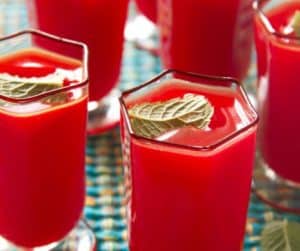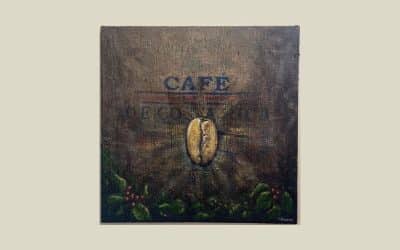
Chiliguaro: Costa Rica’s Spicy National Shot (with roots, rituals and real-world examples)
Costa Rica folds Adventures, Culture, Entertainment, wildlife, Real Estate, Business and Food into everyday life — and you can taste that mix in a tiny glass of chiliguaro. This bold tomato-and-lime shot is the clink after a surf session, the grin at a city opening night, the welcome at a neighbourhood fiesta, and occasionally the ice-breaker at a beachfront property viewing. If you want a “real taste of Costa Rica”, this is it — fast, friendly, and full of character.
What is chiliguaro?
Chiliguaro is a quick, savoury, chilli-bright shot made from guaro, tomato juice, mandarin lime and hot sauce.
-
“Bloody Mary, but beach-ready” — like a mini Bloody Mary without the fuss; ideal when it’s 30°C and the sun’s going down.
-
Clean cane spirit — guaro brings a soft sweetness that doesn’t overpower the citrus and spice.
-
Made for rounds — mixed in a shaker or jug so everyone can toast at once.
Where did chiliguaro come from?
Chiliguaro rose from cantina counter culture in the late 20th century, where bartenders needed a fast, tasty pour for busy nights.
-
Cacique guaro as the base: Costa Rica’s classic sugarcane spirit (think neutral and smooth) became the natural foundation behind thousands of bars from San José to Liberia.
-
Batch-and-brag tradition: Beach towns like Tamarindo and Jacó popularised house recipes; locals still swap tips — “more lime,” “less heat,” “a dash of celery salt.”
-
From neighbourhood to national: Street festivals and bar contests helped turn a local quick-pour into a countrywide calling card.
What does chiliguaro taste like?
It’s zesty and savoury with a gentle cane-spirit lift and a friendly chilli tingle on the finish.
-
First sip (example): cool tomato and bright mandarin lime — think chilled gazpacho vibes in shot form.
-
Mid palate (example): light sweetness from guaro — rounded, never syrupy.
-
Finish (example): a measured Tabasco warmth that makes conversation livelier, not tearful.
How do you make chiliguaro for six?
Use fresh citrus, proper ice and a brisk shake for crisp flavour.
Ingredients (6 shots):
-
¾ cup Cacique guaro — classic Costa Rican sugarcane spirit; neutral and mixable.
-
3 cups tomato juice — choose low-salt brands for better balance.
-
½ cup mandarin lime juice — aromatic and slightly floral; regular lime works if you can’t source mandarina.
-
3 tbsp Tabasco — dependable heat that doesn’t cloud the mix.
-
Salt — for rimming glasses; chilli-salt if you like extra zing.
Method:
-
Rim shot or small highball glasses with lime and salt; set aside.
-
Shake all liquids hard with ice (10–12 seconds) to chill and aerate.
-
Strain into glasses; serve immediately with lime wedges.
Can I customise the classic?
Yes — small tweaks keep it Costa Rican while suiting your crowd.
-
Spice swap (example & description): use Salsa Lizano with chilli or a local chilero de árbol for a fruitier, Costa-Rican heat profile — gentle at first, warmer after a few seconds.
-
Herb lift (example & description): add a pinch of celery salt and cracked black pepper to mimic bar-snack savouriness without extra saltiness.
-
Garden twist (example & description): lightly muddle coriander (cilantro) before shaking; it gives a fresh, green aroma that plays well with lime.
-
Zero-proof twin (example & description): replace guaro with sparkling water and a drop of Worcestershire sauce — same savoury snap, suitable for drivers and non-drinkers.
Where does chiliguaro fit in Costa Rican life?
It’s the social spark that links Food, Entertainment and Culture — and even shows up at business mixers.
-
After-adventure toast (example): surfers in Nosara order a quick round at sunset — cold, salty-rimmed, and gone in one cheer.
-
Wildlife day wrap-up (example): after spotting howler monkeys and scarlet macaws near Carara, friends share a mellow “picante” version before dinner.
-
Real Estate & Business (example): boutique developers at an open house in Playa Flamingo might offer mini shots alongside ceviche — branded napkins, mild heat, non-alcoholic option clearly marked.
-
Festivals (example): food-truck nights in San José often feature a house chiliguaro — some with chilli-salt rims and a coriander sprig for flair.
How do I serve chiliguaro like a local?
Keep it cold, quick and communal.
-
Chill the batch (example): pre-mix in a jug, refrigerate, then shake each round with fresh ice for a silky texture.
-
Rim station (example): bowls of fine salt, chilli-salt and tajín-style seasoning so guests can choose their edge.
-
Pairings (examples with descriptions):
-
Chifrijo: crunchy chicharrón, beans and pico; the shot cuts through richness.
-
Patacones: crisp plantain “plates” with refried beans; savoury notes match perfectly.
-
Ceviche: citrus on citrus — bright, briny and refreshing.
-
Gallo pinto bites: rice-and-beans croquettes; the spice wakes them up.
-
Is it budget-friendly for events?
Yes — batching keeps costs sensible while feeling festive.
-
Pricing example: one 750 ml Cacique bottle yields roughly 25–30 shots at this ratio; add tomato and lime and you’ve got a crowd-pleaser for modest spend.
-
Service flow (example): two jugs — “Suave” (mild) and “Picante” (hot) — speed up lines and keep guests happy.
-
Non-alcoholic mirror (example): a labelled “Sin Guaro” jug ensures everyone’s included.
Any etiquette or safety tips?
Serve thoughtfully and pace the fun.
-
Snacks & water (example): bowls of salted yucca chips and jarritas of chilled water on the bar.
-
Clear labels (example): tags reading “Mild / Hot / Sin Guaro” reduce surprises.
-
Transport cues (example): a small sign: “Toast, don’t rush — rides available.” Keep taxi numbers or a ride-share code handy.
Quick recipe recap
Chiliguaro is made by shaking guaro, tomato juice, mandarin lime and hot sauce over ice, then straining into salted glasses.
-
Ratio: 1 part guaro : 4 parts tomato : ⅔ part lime : hot sauce to taste.
-
Texture: cold, smooth, lightly aerated.
-
Best moment: golden hour to late night, especially after the beach.
FAQ
What spirit is traditional?
Cacique guaro — a neutral, smooth sugarcane spirit that lets lime and tomato shine.
Can I make it in advance?
Yes; batch without ice and refrigerate. Shake each round with fresh ice for best texture.
Is mandarin lime essential?
It’s the authentic choice with a floral aroma; regular lime works well if needed.
How spicy should it be?
“Lively, not punishing.” Start at 3 tbsp per six servings; add more only if your crowd loves heat.
Shot or sipper?
Typically a shot; for hot afternoons, pour over ice in a rocks glass with a chilli-salt rim.
What food pairs best?
Salty, crunchy bar bites — chifrijo, patacones, fried yucca, or fresh ceviche.
Chocolate lava flow cake
Snapper a la Talla
Golden garden cocktail






